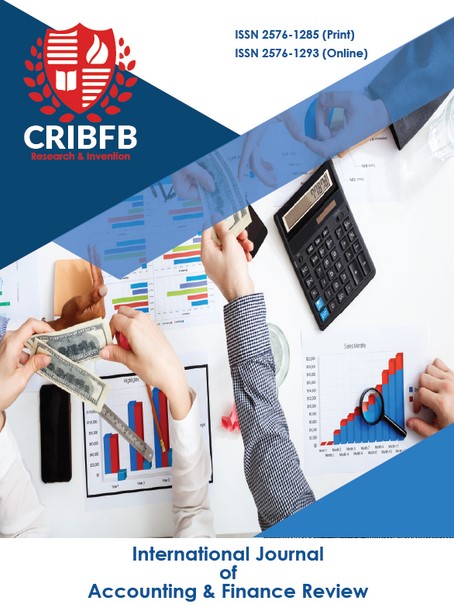Modeling Stock Market Monthly Returns Volatility Using GARCH Models Under Different Distributions
Main Article Content
Abstract
This papers aims to uncover stylized facts of monthly stock market returns and identify adequate GARCH model with appropriate distribution density that captures conditional variance in monthly stock market returns. We obtain monthly close values of Bombay Stock Exchange’s (BSE) Sensex over the period January 1991 to December 2019 (348 monthly observations). To model the conditional variance, volatility clustering, asymmetry, and leverage effect we apply four conventional GARCH models under three different distribution densities. We use two information criterions to choose best fit model. Results reveal positive Skewness, weaker excess kurtosis, no autocorrelations in relative returns and log returns. On the other side presence of autocorrelation in squared log returns indicates volatility clustering. All the four GARCH models have better information criterion values under Gaussian distribution compared to t-distribution and Generalized Error Distribution. Furthermore, results indicate that conventional GARCH model is adequate to measure the conditional volatility. GJR-GARCH model under Gaussian distribution exhibit leverage effect but statistically not significant at any standard significance levels. Other asymmetric models do not exhibit leverage effect. Among the 12 models modeled in present paper, GARCH model has superior information criterion values, log likelihood value, and lowest standard error values for all the coefficients in the model.
Downloads
Article Details
Section
How to Cite
References
Bollerslev, T. (1986). Generalized autoregressive conditional heteroskedasticity. Journal of econometrics, 31(3), 307-327.
Cont, R. (2001). Empirical Properties of Asset Returns: Stylized Facts and Statistical Issues. Quantitative Finance, 1, 223-236.
Ding, Z., Granger, C. W., & Engle, R. F. (1993). A long memory property of stock market returns and a new model. Journal of empirical finance, 1(1), 83-106.
Ding, Z., & Granger, C. W. (1996). Modeling volatility persistence of speculative returns: a new approach. Journal of econometrics, 73(1), 185-215.
Glosten, L. R., Jagannathan, R., & Runkle, D. E. (1993). On the relation between the expected value and the volatility of the nominal excess return on stocks. The journal of finance, 48(5), 1779-1801.
Joshi, P. (2014). Forecasting Volatility of Bombay Stock Exchange. International journal of current research and academic review, 2(7), 222-230.
Karmakar, M. (2007). Asymmetric volatility and risk-return relationship in the Indian stock market. South Asia Economic Journal, 8(1), 99-116.
McMillan, D. G., & Ruiz, I. (2009). Volatility persistence, long memory and time-varying unconditional mean: Evidence from 10 equity indices. The Quarterly Review of Economics and Finance, 49(2), 578-595.
Mittal, A. K., Arora, D. D., & Goyal, N. (2012). Modeling the volatility of Indian stock market. gitam Journal of Management, 10(1), 224-43.
Nelson, D. B. (1991). Conditional heteroskedasticity in asset returns: A new approach. Econometrica: Journal of the Econometric Society, 59(2), 347-370.
Pagan, A. (1996). The econometrics of financial markets. Journal of empirical finance, 3(1), 15-102.
Schrimpf, A. (2010). International stock return predictability under model uncertainty. Journal of International Money and Finance, 29(7), 1256-1282.
Schwarz, G. (1978). Estimating the dimension of a model. The annals of statistics, 6(2), 461-464.




